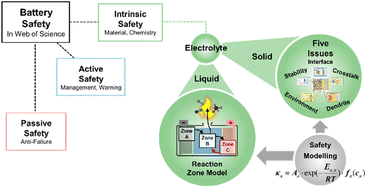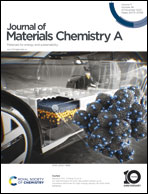Safety of lithium battery materials chemistry
Abstract
Safety problems hinder the utilization of high-energy lithium and lithium-ion batteries, although some electrochemical materials chemistries look promising. This study discusses the opinions of the authors on the predominant battery safety issues. Statistical results indicate that there are three major kinds of safety studies: intrinsic, active, and passive safety. Among these, intrinsic safety covers approximately 80% of the total studies, suggesting that searching for safety solutions in materials chemistry is of high-priority. The most investigated research area is the electrolyte that directly links to the battery fire hazard. Therefore, the major part of this study discusses the safety of lithium-ion batteries with liquid electrolytes and solid-state batteries. To begin with, a reaction zone model was first proposed to depict the dual problem of battery fire and thermal runaway. The problem was further quantified by a diagram with the lowest flammable limit and maximum temperature during battery thermal failure as the two axes. As validated by experimental data from commercial lithium-ion batteries, the diagram helped predict the combustion behavior of lithium and lithium-ion batteries with new materials chemistries. Regarding the safety of solid-state batteries, this perspective discusses five major concerns that are critical but unsolved: (1) the thermal instability of components used in solid-state batteries, (2) the interfacial reactions at the cathode/anode and solid electrolyte interfaces, (3) chemical crosstalk between cathode and anode, (4) lithium dendrite formation and internal short circuit, and (5) the environmental hazards related to the evolved gases and molten lithium. This information suggests that not only should the manufacturing problem be solved before all-solid-state batteries are commercialized, but also safety problems may be the bottleneck that is obstructing the massive production. Safety modelling that may facilitate the development of new materials chemistry is discussed. This perspective may provide new insights into improving the safety of high-energy lithium and lithium-ion batteries, accelerating the research and development of new battery materials chemistry.

- This article is part of the themed collections: Journal of Materials Chemistry A, B & C 10th Anniversary Perspectives and Journal of Materials Chemistry A Recent Review Articles


 Please wait while we load your content...
Please wait while we load your content...